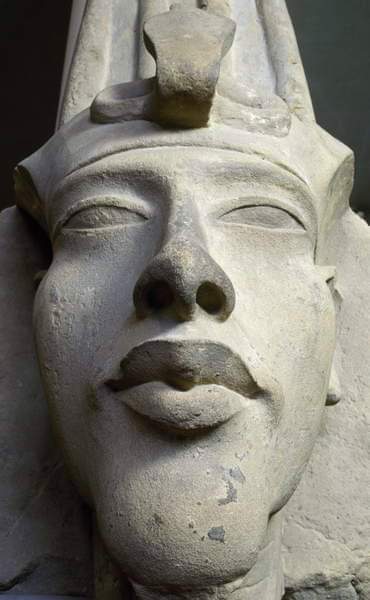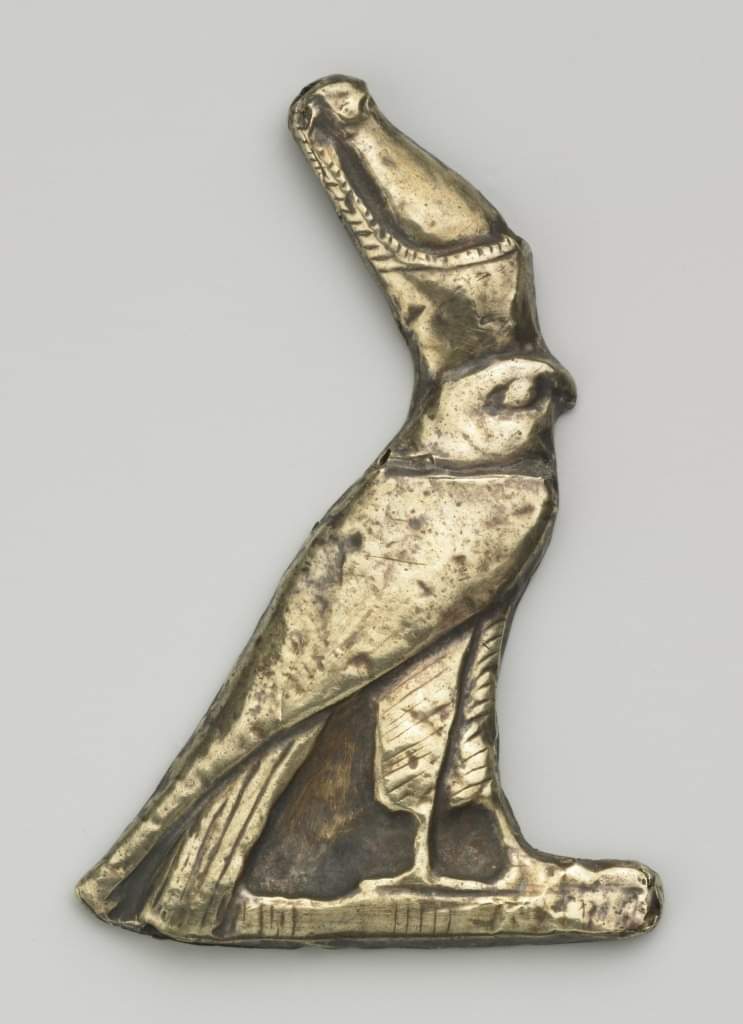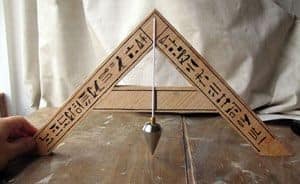Between 1986 and 1991, the joint mission of the Egypt Exploration Society and Leiden Museum excavated the tomb of Maya, an Overseer of the Treasury during the late 18th Dynasty, and his wife Meryt in the Saqqara necropolis. Two previous volumes have published the objects and skeletal remains (2001) and the reliefs and inscriptions (2012). This present and final volume is devoted to the pottery found in the tomb.
Egypt came first, then history and civilization came. Egypt has one of the world's seven wonders of the pyramids. The Virgin Mary came to protect herself and her son. Egypt is the safest destination for tourism. My goal is to help foreigners learn my country’s history, come to Egypt, whatever your budget, and I will be your guide at no additional cost to you. booking with us. The goal is to service booking tours to Egypt. the best Nile cruise in Egypt. https://kingofegypttours.com
Thursday, 16 April 2020
Egypt is the one who invented and learned the world's perfume industry
a view of one of the ancient Egypt's cemeteries illustrates the perfume industry in a cold-time manner, where the flowers are placed in a piece of linen cloth and two women are in two different directions using two times. On the left of the landscape, a girl comes to clients of night flowers (Blue lotus) in a basket of up to her head. The Make Of Lily Perfume The Ancient EgyPtians Loved Beautiful Fragrances. They Associated Them With The Gods and Recognized Their Positive Effect On Health And Well Being. Perfumes Were Generally Applied AS OIL-Based Salves, and there is a numerous recipes and depictions of the preparation of perfume in Tem The Most Highly Prized Perfumes of the Ancient World Came from Egypt. The Most Popular Were Susinum (A Perfume Based on Lily, Myrrh, Cinnamon), Cyprinum (Based Upon Henna, Cardamom, Cinnamon The God of Perfume, Nefertem, Was Also A God Of Healing Who Said To Have Suffe Relief Depicting Women Squeezing Oil From Lily Flowers in A Press for Use in Perfume. Fragment from a decoration of a Tomb. Limestone, 4th Century BC. Now in the Louvre.
Egypt taught the world the science of measurement and area
View the measurement of field areas using the measuring rope.
From the “Menna” tomb, he was a writer for the royal fields during the reign of “Tuthmosis the Fourth.” Most of the scenes of the tomb revolve around cultivation from plowing the land, sowing grains, planting and combing flax, and the views of the harvest
separating from the grains using wooden palms.
Another scene from MENNA tomb depicts a group of boys doing the straw separating from the grains using wooden palms by taking the crop and lifting it in the air so the grains fall to the ground and the straw flies with the air, and we see the men in charge of the ablation process they have covered their hair so that their feelings are not dirty.
The young king's lamp !!
This elegant triple lamp is finely carved, engraved and polished from a single block of alabaster.
The central cup in the middle in the shape of a lotus flower, rises on a long stem.
Surrounding the central cup; two smaller cups resemble a bud on zigzag legs, and each has a leaf spread horizontally, as if floating on the surface of the water. !!
These cups contained floating wicks on the fuel, which had effects inside the cups.
The lamp was found in the tomb of Tutankhamun, in the Valley of the Kings in Luxor.
The lamp is now in the Egyptian Museum in Cairo.The young king's lamp !!
This elegant triple lamp is finely carved, engraved and polished from a single block of alabaster.
The central cup in the middle in the shape of a lotus flower, rises on a long stem.
Surrounding the central cup; two smaller cups resemble a bud on zigzag legs, and each has a leaf spread horizontally, as if floating on the surface of the water. !!
These cups contained floating wicks on the fuel, which had effects inside the cups.
The lamp was found in the tomb of Tutankhamun, in the Valley of the Kings in Luxor.
The lamp is now in the Egyptian Museum in Cairo.
Necklace Tutankhamun !!
Look at this wonderful jewel ... = It is a tut the tut Ankh Amun, which was wearing around his neck and hanging on his chest. This jewel has been discovered in a box in a cartouche found in the cemetery of Tutankhamun in the valley of Kings in Luxor. = The necklace is more than (3300 years) made from the electronic, philosophy, lazor, agate, glass, gold. = Now there are in the Egyptian museum in Cairo.
the ankh (The key to life) and the wase stick, and the Djed column were combined.
Ankh / Wasi / and Grandfather ... the beginning, the repetition, and the continuation: -
From the white chapel (White Chapel) at Karnak Temple ..... one of the most beautiful inscriptions in which the ankh (the key to life) and the wase stick, and the Djed column were combined.
The ancient Egyptian artist portrays these three symbols combined in many inscriptions, because the three are related to the laws of the science of the origin of the universe and its development in ancient Egypt.
The ancient Egyptians believed that there are three main principles that organized the process of creating the universe and its evolution, and these principles are: -
*** The "zep tepi" .... and linguists usually translate it into the first time, but the meaning also includes the first genesis ..... and the beginnings.
*** The "neheh" .... which is the repetition (the repetition of the first generation model) and in which the laws of division are playing a big role.
*** The "Djed" ..... and it is the continuation ... that is, the universe continues to exist ... and this continuation depends mainly on the repetition of the model of the first formation in many forms, as the ancient Egyptians saw the sunrise Every new day is a repetition of the sunrise the first time at the beginning of creation, and they saw the Nile flood, then the water receded from the land of Egypt and its height from the flood water was repeated for the appearance of the Earth the first time when it rose from the eternal water
When creation begins, and without this repetition, the universe falls into the "N" Sea, and returns to its initial state when everything lurking in the Nun is in a state of chaos and darkness.
The three symbols are associated (the key to life, the wase stick, and the grandfather column)
The three fundamental principles of the origin and evolution of the universe.
The key to life (the ankh) was associated with "sab - tepe", that is, the beginnings .... especially the first blow.
And the contemplative of the Egyptian mythology finds that "Hayekit", who is one of the goddesses of the birth, was receiving the newborn at the moment of his birth and with her hand the key to life (ankh) to give him the first blow, which is the beginning of the new life of the born child, which is a repetition of the model of the first generation ..... or the moment The first blow that God deposited in man at the beginning of creation.
And the wand stick was associated with the second principle of the origins of the universe, which is the "neheh", that is, repetition, which was based on division.
Originally, the Was stick was the "six" stick, and Set was the symbol of division in the universe. The legend of Isis and Osiris tells that "Set" tore Osir's body after killing him into parts (14 pieces).
It is this division that guarantees the universe to spread and expand, and not to fall again into the abyss of Nun.
As for the grandfather column (Djed), it was the symbol of continuity ........... the continuity of the universe which is based on the previous two laws.
We notice that the three symbols are surmounted by a zigzag line, which symbolizes the wave and is usually used to denote water waves .... But the closest meaning to this context is that this wave is an energy wave
It is not a wave of water .... and here would be a symbol of cosmic energy.
Cat Mummy.
Cats were associated with the goddess Bastet and revered as protectors of the home. Great quantities of mummies of cats were left at cult centers of the goddess at Saqqara and other cult sites in the Delta and Middle Egypt.
X-rays reveal that this example is actually a simulated mummy with a cat skull and a stray bone forming the body. It has been wrapped and detailed in paint to look like a complete cat mummy. Such simulated mummies were not uncommon, given the vast amounts of animals that were buried. Many animal burials seem to have occurred at a single time, perhaps during festivals. If there were not enough actual creatures around to be offered, then substitutes had to be produced.
a new style of coffin .
During the early 18th Dynasty, a new style of coffin became popular among private people in Egypt, of which few survive today. Recalling coffins of the Middle Kingdom, examples of the new style are known as "white coffins" because their primary decoration consists of a white background with yellow bands spaced along the length and width of the coffin, imitating the bandages wrapping the mummy. This coffin, beautifully carved and painted, wears a heavy, striped wig and broad collar. A goddess spreads her wings protectively across the chest, while two other female deities, perhaps Isis and Nephthys, are depicted inside the lid and trough of the coffin. The distinctive white and yellow decoration is visible along the sides of the case, with large udjat eyes on each shoulder. The yellow bands contain religious texts, while the intervening white sections contain images of the four sons of Horus: Duamutef, Hapy, Imsety, and Qebehsenuef. An offering formula is inscribed down the front of the lid.
Pet Dog Roman Period.
The ancient Egyptians saw dogs as companions and pets. Hieroglyphic captions identified them by names such as "Ebony" and "Spot". This statuette with its pointed ears, ruff, and curled tail, is reminiscent of Basenji-mix dogs seen today in Egypt. The embellished collar worn around the dog's neck indicates it was a beloved household pet. The number of ceramic figurines fashioned in the Roman Period attest to the popularity of this breed, although those made in faience are more rare.
Falcon Pendant Keywords
The Middle Kingdom in Egypt is generally regarded as the zenith of Egyptian jewelry making. The jewelers of the royal court produced items of exquisite simplicity and elegant design from rare and exotic materials. Many motifs that had heretofore been reserved exclusively for the king's regalia were adopted by the upper classes. An iconic example is this pendant of the falcon god, Horus. Horus was the symbol of the pharaoh and his protector. On this pendant he is shown wearing the Double Crown of Upper and Lower Egypt, the symbol of kingship. The falcon's wings are folded, and he perches on a schematic version of the traditional block border motif. The pendant was formed of two sheets of electrum (a combination of gold and silver, thought to have magical properties by the ancient Egyptians), and the face and details of the wings and talons of the raptor were chased onto the top sheet, and a plain back was soldered to it with silver solder. Examples of this type of pendant are found in the world's greatest Egyptian collections in Cairo, London, and New York.
Relief of a Queen or Goddess.
This relief depicts a queen or goddess wearing a broad collar with one strap of her dress visible below the rows of beads. The echeloned curls of her tripartite wig are
surmounted by a vulture headdress, with the bird's head jutting forth from her brow. The vulture headdress became an attribute of royal women in the Old Kingdom, originally linking the queen with Nekhbet, the tutelary goddess of Upper Egypt, although it came to be associated with other goddesses. When worn by royal women, the headdress was likely intended to underscore the divinity of the queenship. Though princesses holding religious office and noblewomen were portrayed in the vulture cap during the New Kingdom and Third Intermediate Period, its use was again limited to queens and goddesses in the Ptolemaic era. The lower edges of an additional crown, perhaps the Red Crown of Lower Egypt or the Double Crown, are visible atop the vulture headdress. Queen Arsinoe II (279-270 BC) was frequently depicted wearing a combination crown composed of a vulture headdress, Red Crown, ram and cow horns, and solar disk. Both queens and goddesses might appear in the Double Crown, signifying the unity of Upper and Lower Egypt. In this instance, the lack of context or inscription precludes a definitive identification of the woman as royal or divine.
Ramses II is one of the most famous Egyptian kings.
Ramses II is one of the most famous Egyptian kings who ruled Egypt in its golden age. He is the mightiest third pharaoh of the 19th dynasty of Egypt. King Seti I gave the crown to Prince Ramses who turned to Ramses II. He gave him a house and harem, "prince of Egypt" Ramses participated in military campaigns with his father where he gained a solid military and kingship experience before he was a king.
the painted anthropoid wooden coffin lid of a man named Sema.
Detail from the painted anthropoid wooden coffin lid of a man named Sema-Tawy-iirdis. He lived during the early part of the Ptolemaic Period (304-30 BCE). It shows a representation of Nut, goddess of the sky, with outstretched wings offering protection to the deceased. She carries the sun disk atop her head and a feather in each hand. This beautiful piece (E1267) is now in the Glencairn Museum,, USA.
Nut is one of the oldest deities in the Egyptian pantheon and has an extraordinary density of 'familial' ties to other deities. She is the granddaughter of the creator god Atum, the daughter of Shu and Tefnut (air and moisture), the sister and wife of Geb (earth), the mother of Osiris, Isis, Nephthys, and Seth, and the grandmother of Horus.
The top part of a granodiorite statue of King Thutmose III.
The top part of a granodiorite statue of King Thutmose III, who reigned circa 1479-1425 BCE during the 18th Dynasty. As this part is preserved just above the elbows, it cannot be ascertained if the king was depicted standing, sitting, or perhaps kneeling in front of a deity. This sculpture (INV 70) is now in the Kunsthistorisches Museum Wien, Vienna, Austria. Photo: Kunsthistorisches Museum Wien.
Thutmose III created an Egyptian empire. Historians consider him not only a military genius but also a skilled strategist. Through at least 15 foreign campaigns in 20 years, he expanded Egypt's power to its greatest extent in the Near East (Syria-Palestine) and in Nubia.
He was also a great builder. He commissioned the construction of over 50 temples. But his greatest projects were at Karnak. Large parts of this temple complex are his work, including a number of obelisks as well as pylons on which he is depicted smiting Egypt's enemies. He also restored the monuments of his illustrious warrior predecessors, including Amenhotep I and Thutmose I.
"Little wonder that the cult of Thutmose III was honoured for another 1,500 years, until the end of the Ptolemaic Period; or that his name, inscribed on scarabs and amulets, was believed to provide magical protection. For he was, without doubt, the greatest of all soldier pharaohs." ― Wilkinson, Toby, Lives of the Ancient Egyptians, Thames & Hudson, New York, USA, 2013.
One of the amazing treasures of the young king Tutankhamun .
One of the amazing treasures of the young king Tutankhamun discovered in his tomb by Howard Carter. The tomb actually contained no less than seven beds. This bed, together with two others were probably ritualistic. The other two also had elongated bodies of animals. These animals are manifestations of the ancient Egyptian god, Mehet-Weret.
Subscribe to:
Comments (Atom)
GOOD MORNING FROM EGYPT EGYPT READY NOW مصر مستنياك
GOOD MORNING FROM EGYPT EGYPT READY NOW مصر مستنياك http://kingofegypttours.com/ Egipto te espera http://kingofegypttours.com/ Egypt is wa...

-
Cairo is fan-shaped, narrowest in the south, where the river valley is wedged between desert escarpments, and widest in the north, where t...
-
Abu Simbel, the site of the two temples built by the Egyptian king Ramses II (reigned 1279-13 BC), which is now located in Aswan Govern...
-
GOOD MORNING FROM EGYPT EGYPT READY NOW مصر مستنياك http://kingofegypttours.com/ Egipto te espera http://kingofegypttours.com/ Egypt is wa...



















































